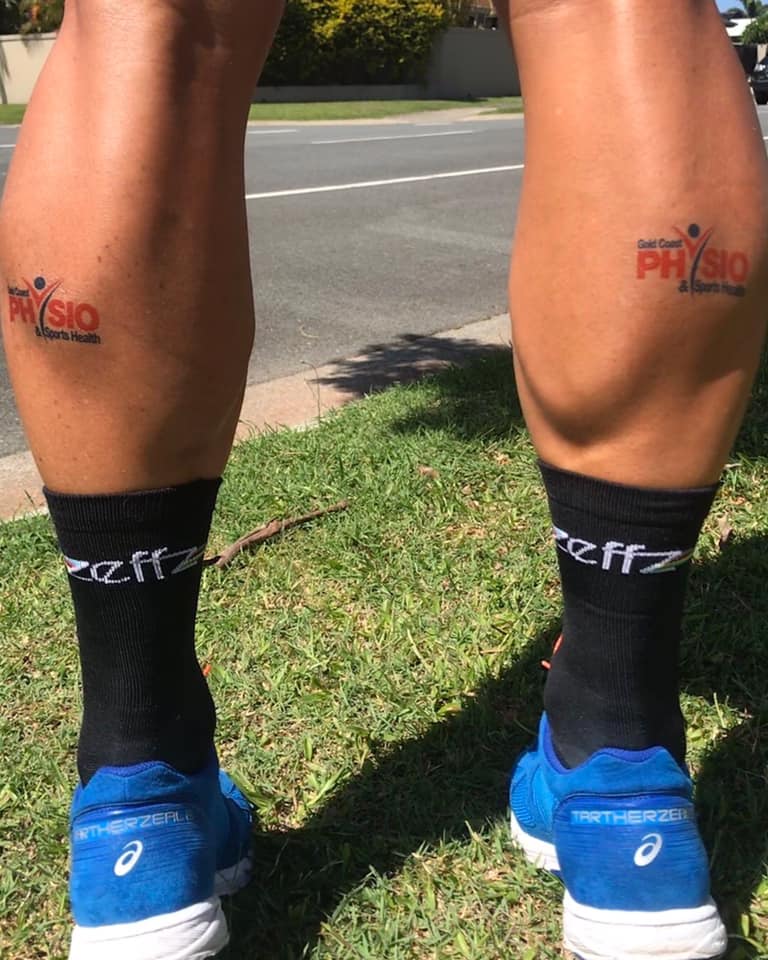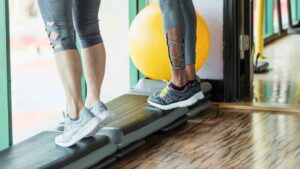Do cyclists really need calf muscles?
By APA Sports Physio, Cyclist, previous Orica-Greenedge Cycling Physio & GC Suns AFL Official Physio, Rob Brown
What are Calf Muscles?
 The calf muscles are composed of 2 muscles located at the back of the lower leg- the gastrocnemius (outer muscle) and the soleus (under the gastroc). Both have a common insertion on to the heel via the Achilles tendon however, the gastrocnemius also crosses the knee joint originating from the back of the thigh bone, whereas the soleus originates from the back of the shin bone and therefore does not cross the knee joint.
The calf muscles are composed of 2 muscles located at the back of the lower leg- the gastrocnemius (outer muscle) and the soleus (under the gastroc). Both have a common insertion on to the heel via the Achilles tendon however, the gastrocnemius also crosses the knee joint originating from the back of the thigh bone, whereas the soleus originates from the back of the shin bone and therefore does not cross the knee joint.
How they work in Cycling:
In Cycling, the legs generate force and power that is distributed to the pedal via the foot. The foot is held in position with the Calf Muscles ie. During the power phase (downstroke) of the pedal stroke the calf muscles point the ankle (Lifting the heal up and pushing the toes down) therefore helping applying power to the pedal. As the gastrocnemius crosses the knee joint it will have a role in bending the knee during the up-stoke. In combination with other foot and ankle muscles the calf muscles play a very important role in stabilising the foot and ankle to enable the best transference of force to the pedal.
What can go wrong?
Due to the relatively low forces in cycling it is rare to sustain a traumatic soft tissue injury to the calf muscles (ie a tear or strain). However, weakness in the calf muscles will result in ineffective force production, impaired stability and control of the foot and ankle, and altered pedaling technique, most commonly as dropping of the heel during the end stage of the down stoke. This can result in an increased risk of injury to other parts of the lower limb including the Achilles tendon and the front aspect of the knee as the quads are overloaded due to the inefficiency at the foot and ankle.
Other injuries that are increased risk due to inefficient calves include front ankle pain, increased pressure of the hands to stabilise resulting in tingling in hands, foot & pain from pressure developing against the shoe, and many others that we will only know about once you have a video review of Cycling technique.
How to fix it? Its simple!
 Calf raises are a fantastic exercise that will both strengthen ankle point and improve stability and control of the foot, ankle and knee during cycling. This will aid in reducing the risk of injury and most importantly improve power and efficiency on the bike.
Calf raises are a fantastic exercise that will both strengthen ankle point and improve stability and control of the foot, ankle and knee during cycling. This will aid in reducing the risk of injury and most importantly improve power and efficiency on the bike.
Try doing 3-4sets of 20-30 calf raises with your body weight simply 2-3 times per week on a single leg. OR, add weight by holding a heavy dumbell, or using a smith machine and do 3 sets of 8-10reps with both legs together. You will be amazed how much this will help you feel the pressure and power you can start to put through the pedal.
You may also need a tweak of cycle shoes and Bike Position to get your foot in the ideal position over your pedal interface, but we can help you with that! Phone us today on 07 5500 6470 or Book Online for an appointment.
Happy Cycling!

































